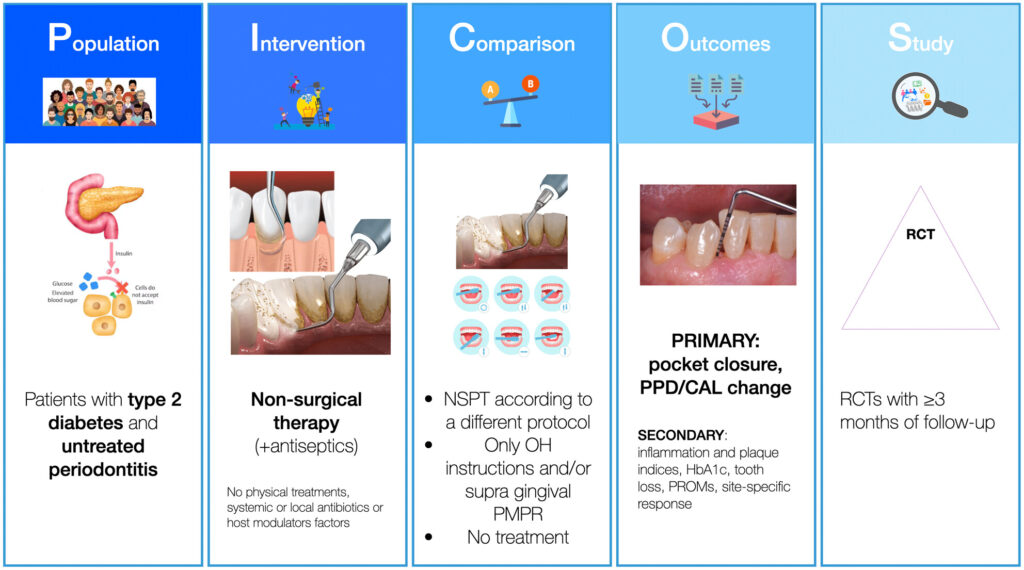Periodontitis adjunct therapy encompasses supplementary treatment modalities designed to augment conventional mechanical debridement, specifically scaling and root planing (SRP). As periodontitis is a multifactorial disease with microbial, immunological, and behavioral components, monotherapy often proves inadequate. Therefore, the integration of adjunctive therapies has emerged as a vital strategy to enhance healing outcomes, reduce inflammation, and promote long-term periodontal stability.

Rationale Behind Adjunctive Periodontal Therapies
Conventional SRP can disrupt subgingival biofilms, yet it may be insufficient for eliminating pathogenic microorganisms, particularly in deep pockets, furcations, and inaccessible anatomical sites. Adjunctive therapies are designed to:
- Improve bacterial eradication
- Enhance tissue regeneration
- Modulate host inflammatory responses
- Prevent recurrence of disease
Systemic Antimicrobial Therapy in Periodontitis
Indications and Mechanism
Systemic antibiotics are prescribed in aggressive or refractory periodontitis cases, especially when systemic involvement or high microbial load is present. Their role is to reduce pathogenic bacterial colonies that survive SRP.
Commonly Used Antibiotics
- Amoxicillin + Metronidazole: Effective against A. actinomycetemcomitans and P. gingivalis.
- Azithromycin: High tissue penetration and anti-inflammatory benefits.
- Clindamycin: Reserved for penicillin-allergic individuals.
Caution: indiscriminate use may lead to antibiotic resistance and adverse systemic effects.
Local Drug Delivery Systems
Site-Specific Applications
Local drug delivery systems (LDDS) offer controlled, targeted release of antimicrobials directly into periodontal pockets, minimizing systemic exposure.
Common Agents and Carriers
- Chlorhexidine chips
- Doxycycline hyclate gel
- Minocycline microspheres
- Metronidazole gel
These LDDS enhance subgingival disinfection post-SRP and are particularly effective in pockets ≥5mm.
Laser-Assisted Periodontal Therapy
Mechanism of Action
Laser therapy exerts photothermal and bactericidal effects, reducing bacterial load, removing diseased epithelium, and promoting biostimulation.
Types of Lasers Used
- Diode lasers (810–980 nm): Target pigmented pathogens
- Er:YAG lasers: Effective for calculus removal and root surface debridement
- Nd:YAG lasers: Used for deep pocket sterilization and coagulation
Laser therapy enhances healing, reduces bleeding on probing, and may lead to clinical attachment gain.
Photodynamic Therapy (PDT)
Non-Antibiotic Antimicrobial Modality
PDT involves the activation of a photosensitizer (e.g., methylene blue or toluidine blue) using low-level laser light, producing reactive oxygen species that destroy bacterial cells.
Clinical Benefits
- Minimal side effects
- No risk of antibiotic resistance
- Effective against both aerobic and anaerobic organisms
Repeated PDT applications alongside SRP have shown significant improvement in probing depth reduction and bleeding scores.
Host Modulation Therapy (HMT)
Targeting the Inflammatory Cascade
HMT focuses on modifying the patient’s immune response to reduce tissue destruction rather than targeting bacteria directly.
Therapeutic Agents
- Sub-antimicrobial dose doxycycline (SDD): Inhibits matrix metalloproteinases (MMPs)
- NSAIDs: Control prostaglandin E2 levels
- Bisphosphonates: Inhibit osteoclastic bone resorption
HMT is particularly beneficial in chronic periodontitis with systemic inflammation.
Probiotics in Periodontal Health
Restoring Microbial Homeostasis
Probiotics function by introducing beneficial bacteria that compete with pathogenic organisms, enhancing microbial balance.
Effective Strains and Benefits
- Lactobacillus reuteri
- Lactobacillus brevis
- Bifidobacterium spp.
Probiotic lozenges or mouth rinses post-treatment can reduce plaque formation, inhibit P. gingivalis, and support long-term maintenance.
Emerging Adjunctive Modalities
Enamel Matrix Derivatives (EMD)
Applied to root surfaces during surgical procedures to stimulate periodontal regeneration, EMD supports new cementum, periodontal ligament, and bone formation.
Platelet-Rich Fibrin (PRF)
Autologous growth factor-rich matrices such as PRF are gaining traction for wound healing and soft tissue regeneration.
Ozone Therapy
Ozone gas and ozonated water demonstrate antimicrobial and anti-inflammatory properties, serving as supportive disinfectants in nonsurgical therapy.
Clinical Guidelines for Adjunctive Therapy Selection
| Therapy Type | Ideal Indications | Considerations |
|---|---|---|
| Systemic Antibiotics | Aggressive periodontitis, systemic involvement | Monitor for allergies, resistance |
| Local Drug Delivery | Deep isolated pockets, localized chronic sites | Short-term use; avoid overuse |
| Laser Therapy | Bleeding, inflamed deep pockets | Requires training and calibrated devices |
| Photodynamic Therapy | Antibiotic-resistant sites, recurring infection | Safe and repeatable |
| Host Modulation Therapy | Systemic inflammatory markers, refractory cases | Long-term compliance required |
| Probiotics | Maintenance phase, prevention of recolonization | Adjunct to mechanical cleaning, not standalone |
Frequently Asked Questions
Q1. Are adjunct therapies mandatory for all periodontitis patients?
No. They are recommended based on disease severity, patient risk factors, and response to initial therapy.
Q2. Can laser therapy replace scaling and root planing?
No. Laser therapy is a supplement to, not a replacement for, mechanical debridement.
Q3. Do probiotics cure periodontitis?
Probiotics support periodontal health but must be combined with conventional therapy for effective outcomes.
Q4. What is the safest adjunct therapy for medically compromised patients?
Photodynamic therapy and probiotics are non-invasive and free from systemic side effects, making them suitable choices.
Q5. How long should host modulation therapy be used?
Typically, sub-antimicrobial dose doxycycline is administered for 3–9 months under professional supervision.
Adjunctive therapies in periodontitis represent a transformative advancement in periodontal care. When integrated with conventional scaling and root planing, these therapies significantly enhance clinical outcomes, promote tissue regeneration, and minimize disease recurrence. A patient-specific approach, considering risk profile, disease severity, and systemic health, is essential for selecting the most appropriate adjunctive strategy. Through this multidisciplinary paradigm, we can achieve long-term periodontal stability and improved overall health.